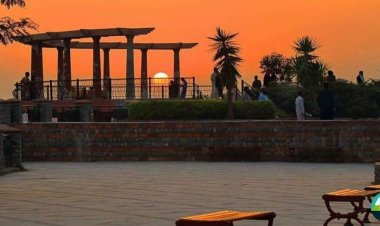Ranikot Fort: The Majestic Great Wall of Sindh

Ranikot Fort, also known as the Great Wall of Sindh, is a historical fort located near Jamshoro District, Sindh province, Pakistan. It is believed to be the largest fort in the world, with a circumference of approximately 26 kilometers.
History:
Ranikot Fort was built during the 17th century by the Talpur dynasty, who ruled the region at that time. It was built in response to the potential threat of invasions by the Mughal Empire, which had expanded its control over much of the Indian subcontinent by that time.
It is believed to have been built in phases over a period of several decades. Over the centuries, the fort has been occupied by various rulers and armies, including the Kalhora dynasty, the British, and the Talpur Mirs of Hyderabad.
A Popular Tourist Destination
Ranikot Fort is a popular tourist destination, attracting visitors from all over the world who come to admire its unique architecture and historical significance. The fort's impressive size and grandeur make it a must-visit attraction for many travelers to Pakistan.
Features of Ranikot Fort:
Visitors can explore the fort's many structures, including the walls, gates, bastions, and watchtowers, which provide a glimpse into the fort's military history and the strategies used to defend it. The fort's interior also includes several residential and administrative buildings, including a mosque, a palace, and a royal bath.
In addition to its historical significance, the fort also offers stunning views of the surrounding Kirthar Range and the Indus River valley. Visitors can take a leisurely stroll along the fort's walls, or hike through the nearby hills and valleys to explore the region's natural beauty.
Restorations:
Despite its popularity, Ranikot Fort still requires extensive restoration work to preserve its unique architecture and historical significance. The Pakistani government and international organizations have initiated several restoration and preservation projects in recent years, in an effort to protect this cultural treasure for future generations.


















